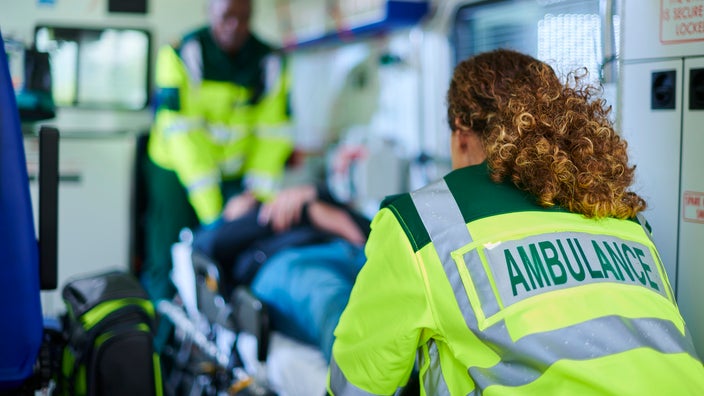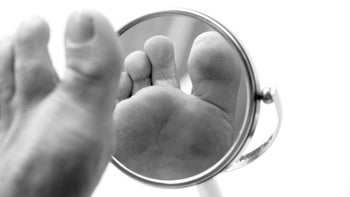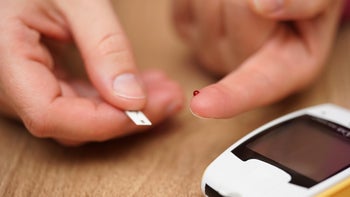
What Is Diabetic Ketoacidosis (DKA)?
Key takeaways:
Diabetic ketoacidosis (DKA) is a serious complication of diabetes that can be life-threatening.
Common causes for DKA include illness, infection, stress, diet changes, medication, and drug use.
Without emergency medical treatment, DKA can be fatal.

Diabetic ketoacidosis is a serious complication of diabetes that can be life-threatening. If you or a loved one has diabetes, it is important to be aware of the signs and symptoms of diabetic ketoacidosis and when to seek medical care. Read on to find out more about DKA and what you can do to prevent it.
What is DKA?
Diabetic ketoacidosis (DKA) is a serious complication of diabetes that happens when blood glucose levels are dangerously high. If you have diabetes, and your body does not have enough insulin, the glucose in your blood can’t get into your cells. Glucose is the body’s main source of energy, and, when our cells don’t get enough glucose, the body starts to find energy elsewhere. Typically, that happens by breaking down fat to create ketones. But too many ketones in the blood can make it acidic (ketoacidosis).
Why is DKA dangerous?
When blood becomes acidic, it can affect many of the body’s essential functions. This makes DKA a medical emergency that requires urgent medical care in the hospital. Without treatment to reverse the acidity of the blood, DKA can lead to severe dehydration, kidney failure, cardiac arrest, coma, and even death.

GLP-1 Nutrient Support
Explore dietitian-formulated, doctor-approved supplements from Whole Health Rx that work alongside GLP-1 medications for a balanced approach to weight loss.

Symptoms of DKA
Common symptoms of DKA include:
Thirst and dry mouth
Fatigue
Vomiting and abdominal pain
Fruity breath odor
Shortness of breath
Confusion
DKA is more common in people with Type 1 diabetes than Type 2. In fact, DKA is sometimes the first sign of Type 1 diabetes in people who have not been previously diagnosed with it.
What causes DKA?
DKA is much more common in Type 1 diabetes than in Type 2. That said, serious illness, injury, missed insulin doses, or high stress can trigger DKA in people with Type 2 diabetes.
DKA can happen for many different reasons. Typically, it happens when there is a mismatch between the amount of insulin in your body and the level of glucose in your blood.
This can either be because your body has too much glucose or not enough insulin. Examples of why your body might not have enough insulin may include:
Cells in the pancreas can’t make insulin — this is what happens to cause Type 1 diabetes.
An insulin dose that is too low.
Missed insulin doses.
A broken or clogged insulin pump.
There are many reasons why your blood glucose levels can become higher than normal. For example, reasons can include:
Diet changes
Infection or illness
Stress
Heart attack or stroke
Trauma
Alcohol or drug use
Medications
DKA can also happen when you are not eating enough. When you feel sick, you may not feel hungry. If you do not eat, the liver starts to make ketones to provide energy for the body. Too many ketones can lead to DKA.
How can I know if I have DKA?
If you have diabetes and you aren’t feeling well, check your blood glucose levels right away. You also need to check your ketone levels every 4 to 6 hours if:
You have diabetes, and you feel sick
You have diabetes, and your blood glucose level is >240 mg/dL, even if you feel well
How can you test for ketoacidosis at home?
You can test for ketones at home using an at-home ketone monitor. This monitor is similar to a glucose monitor and involves pricking your finger and putting a drop of blood on a strip of paper. There is also an at-home urine test that you can use to test for ketones instead of a blood test. If your ketones are high or moderate, call your doctor or go to the emergency room right away, especially if you have symptoms of DKA.
What is the treatment for DKA?
DKA is a medical emergency that requires treatment in the hospital.
Typically, treatment involves:
Intravenous fluids
Insulin
Regular blood draws to check levels of acidity and essential salts (electrolytes)
Your care team will also want to find out what caused you to have DKA and start treatment for that, too.
Preventing DKA
You can prevent DKA by knowing the risk factors, recognizing the symptoms, and seeking early treatment before DKA sets in.
Here are some recommendations that can help:
Check your blood glucose levels regularly.
Use insulin regularly to keep your blood glucose levels in range. If you use an insulin pump, check regularly that it is working as expected.
Learn to recognize symptoms of DKA, especially during times of illness, injury, or increased stress.
Don’t delay medical treatment if you have an accident or develop an infection.
Check your ketones anytime you have blood glucose levels higher than 240 mg/dL, even if you feel well.
The bottom line
DKA is a serious and often life-threatening complication of diabetes that every person with diabetes should be aware of. It happens when there is a severe imbalance of insulin and glucose in the body. The result is a buildup of acidic ketones in the bloodstream, which can have a toxic effect.
Without treatment, high levels of acidity in the body start to impact on the body’s essential functions, affecting the heart, kidneys, and even the brain. Checking blood glucose levels regularly — especially during times of illness or injury — can help to spot DKA early.
Why trust our experts?


References
American Diabetes Association. (n.d.). Diabetes & DKA (ketoacidosis).
Centers for Disease Control and Prevention. (2021). Diabetic ketoacidosis.
MedlinePlus. (2020). Diabetic ketoacidosis.
MedlinePlus. (2020). Ketones in blood.
MedlinePlus. (2020). Ketones in urine.

























